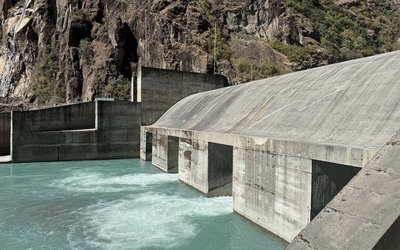More on Review





Irrespective of contemporary externalised political divisions in Nepal, China keeps moving ahead with its "two-pillar" policy in South Asia. The two pillars in this policy are Nepal and Pakistan.
Two-pillar policy
China had been historically compelled to subscribe to a "two-pillar" policy because a trust deficit continued to prevail between it and the third pillar which lacked self-confidence. It does not mean that one of the two identified pillars, Nepal, is a self-confident one. But China appreciates the self-assessment of the knowledgeable Nepali people who can candidly and objectively explain why Nepal now is so weakened.
A historically weakened Nepal’s topmost critical need is a sense of security. As a matter of fact, an insecure Nepal renders itself most vulnerable to the forces of interference and instability that have self-righteously owned Nepal as their "Free Tibet."
Since a secure Nepal will require support from both traditional as well as non-traditional sources of security, China - to effectively and systematically execute its "two-pillar" South Asian policy - will need to extend its defensive security policy, foreign aid policy of south-south cooperation and policy of independence and liberation, stability and development to one of its "two pillars." China’s proposed new treaties on cultural and economic cooperation with Nepal are, therefore, timely and contextually relevant.
Addressing a talk programme organised by the China Study Centre, Nepal on July 15 to mark the 90th year of the founding of the Communist Party of China (CPC), Chinese Ambassador to Nepal Yang Houlan figuratively described China’s domestic status thus: "There’s an old saying in China, governing a big country as if you’re cooking a small fish."
He continued, "In a country like China, with a vast territory and a large population, how to achieve comprehensive, coordinated and sustainable development has always been an issue that the Chinese government must face, and the Five-Year Plan for the economic and social development shall be the compass of China’s economy.
The year 2011 is the first year of the 12th Five-Year Plan. These five years are a critical period for China to build a moderately prosperous society in all respects, deepen reform and open up and accelerate the transformation of the development pattern and an important starting point for the new stage of China’s economy, which still has a long way to go and will not be smooth in the future. "However, with the reverence for history and the thinking on reality, China’s economy will take new steps and rise to a new level."
Accordingly, we were recently informed in Lanzhou that under the 12th Five-Year Plan and the 2nd phase of the West China Development Strategy, China will be more focussed on resource conservation, sustainable resource utilisation and productive regional resource linkages.
On August 1, at a programme organised by World CultureNet to commemorate the establishment of diplomatic ties between Nepal and China, Ambassador Yang reaffirmed that in 2009, state leaders of the two countries agreed to establish the China-Nepal Comprehensive Cooperative Partnership (CCP) featuring ever-lasting friendship and bring the bilateral relations to a new height.
The policy statements above seriously mention "a new level" for the Chinese national economy in the near future and the agreed CCP that will take bilateral ties to "a new height." The link between these two statements is obvious. Nepal’s liberation into a reasonably confident nation to a great extent depends upon how soon China and Nepal start wholesomely enforcing this link between China’s spectacular economic development and Nepal’s to-be-achieved security by planning their act together.
Development of hydropower, for example, in neighbouring Gansu province of China (where 9,000 MW of hydropower has already been developed), may provide a suitable joint model for both China’s National Development and Reform Commission and Nepal’s National Planning Commission on how to sustainably harness and link hydropower development with forest conservation by replacing fuelwood use, socio-economic development of rural households by making clean energy available at a competitive price, and autonomous enterprise development by ensuring energy security at the local level.
Indeed, the link or the integrating process will have to pass through the entire management cycle - planning to monitoring with corrections at mid-points. Only this way, the uncertainty in contemporary Nepal can be taken care of and successfully dealt with. Both the countries linked by mountains and rivers have to put management knowledge, science and technology of the 21st century to forge a modern and dynamic linkage.
China-Nepal bilateral cooperation does not need to be bogged down over South Asian vicissitudes, although forces of interference and instability in Nepal have so far been successful in preventing China from getting into Nepal with the basketful of cooperation.
These forces, especially in the last 10 years, have selectively induced political instability in Nepal in a way that - just for illustration - any high governmental level visit from China was deviously blocked. In fact, since the early 1960s, China has been accused of clandestine diplomatic motif for its public or state activities. Perhaps for these biases and prejudices, foreign policy nuances have become peripheral or secondary to a responsible power, forcing it to conclude that comprehensive cultural and economic cooperation is the determinant factor in the 21st century.
Disorientation
It is very unfortunate that South Asia that once was the light of Asia now suffers so much disorientation and inferiority, and Nepal, that helped ensure security in the most insecure times of the post-British rule in this region in the late 1940s, has never been so acutely vulnerable to the forces acting against its own political existence.
(The Rising Nepal)





